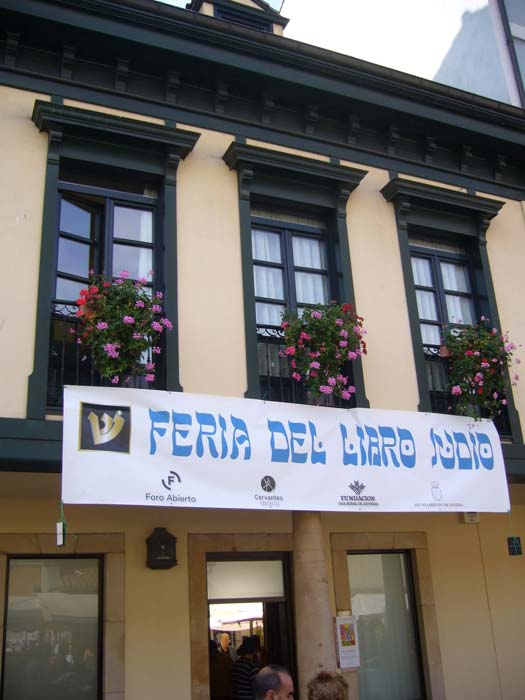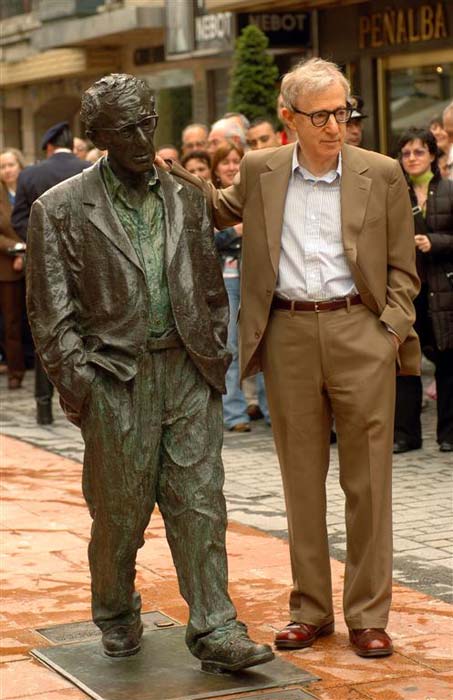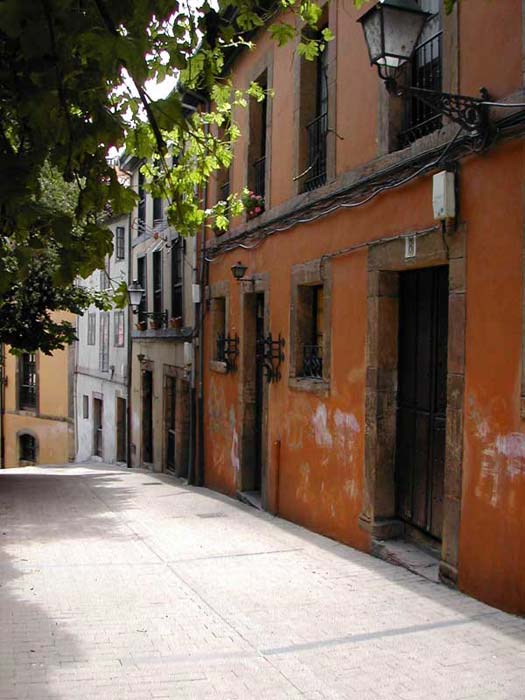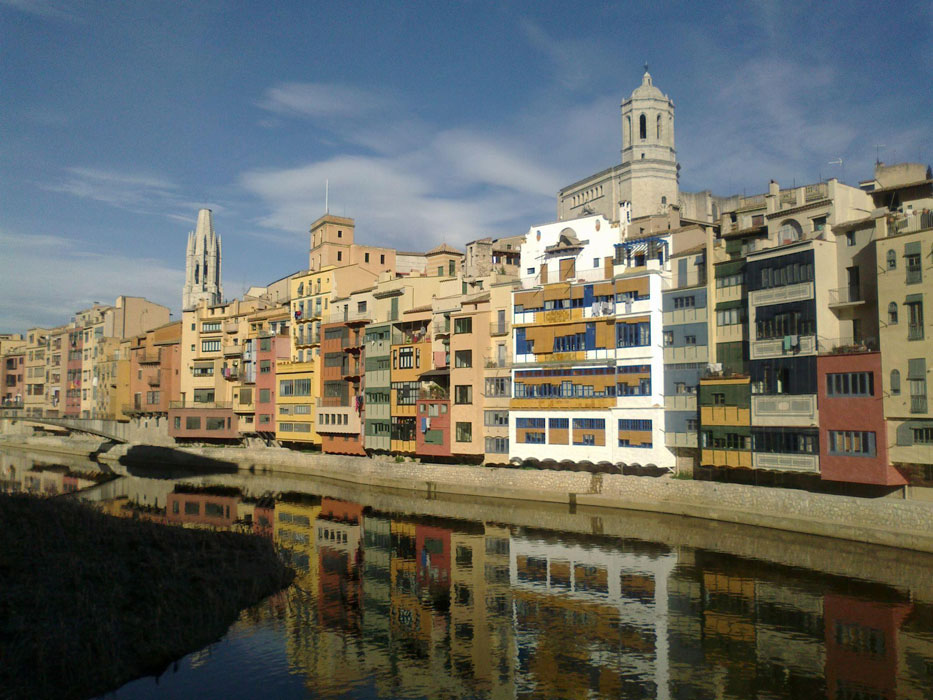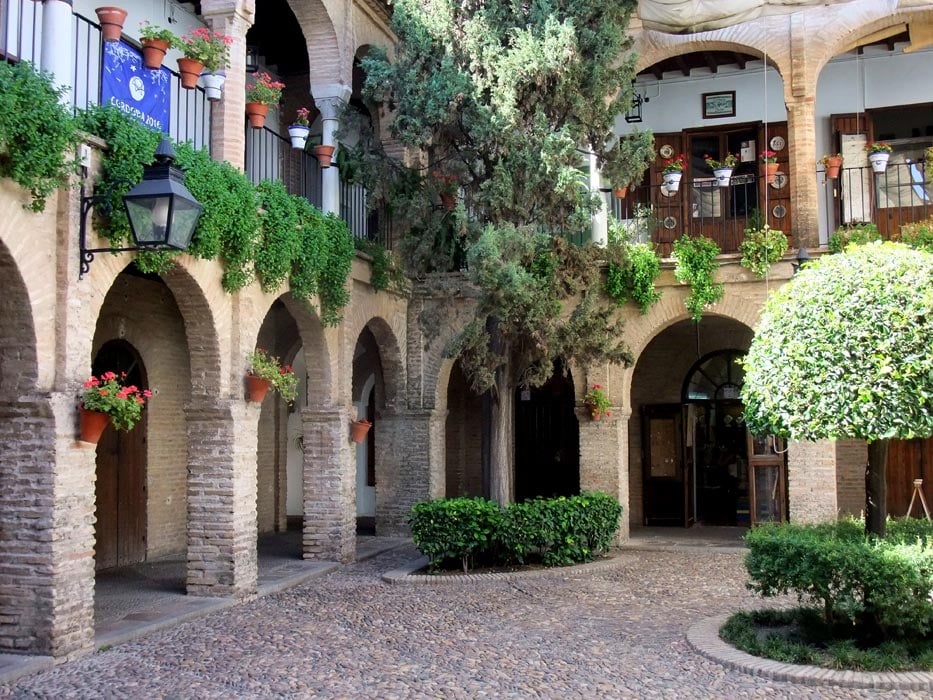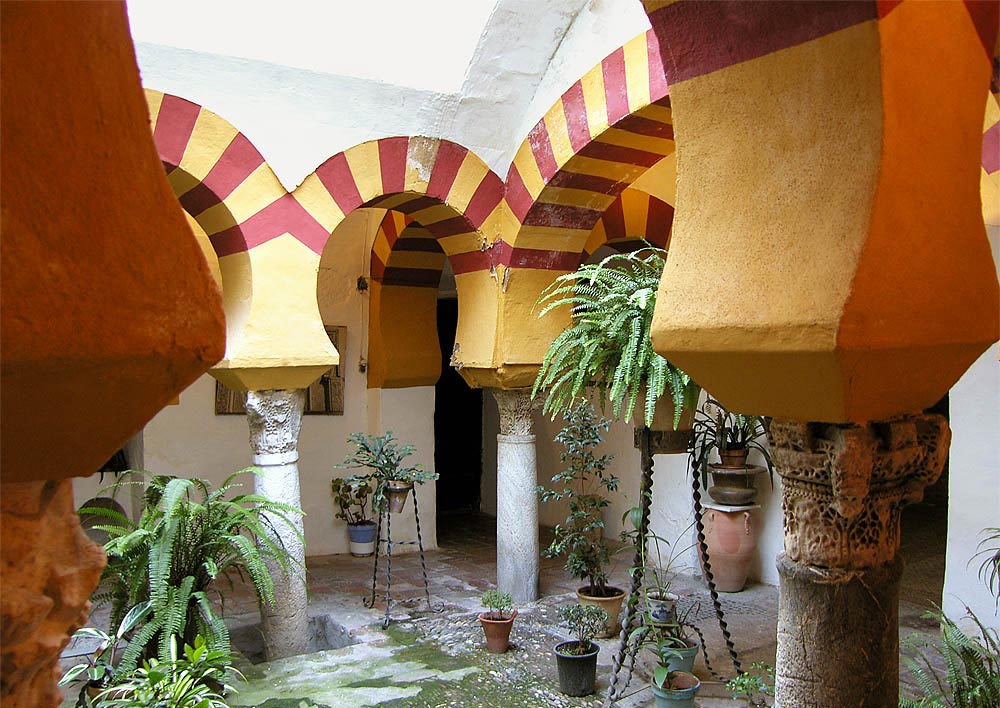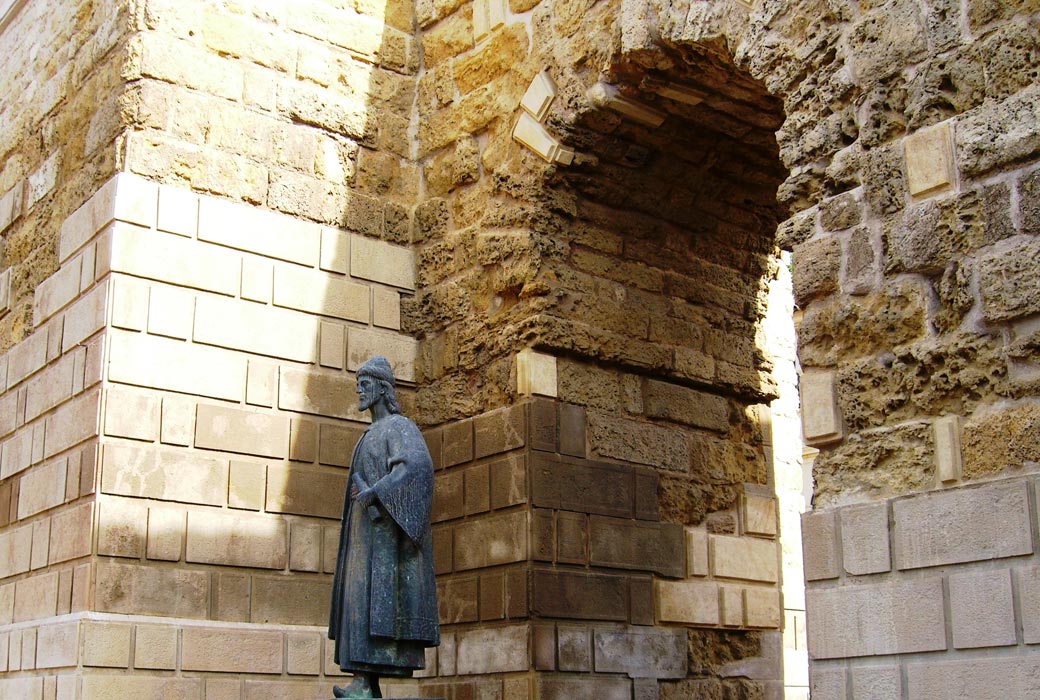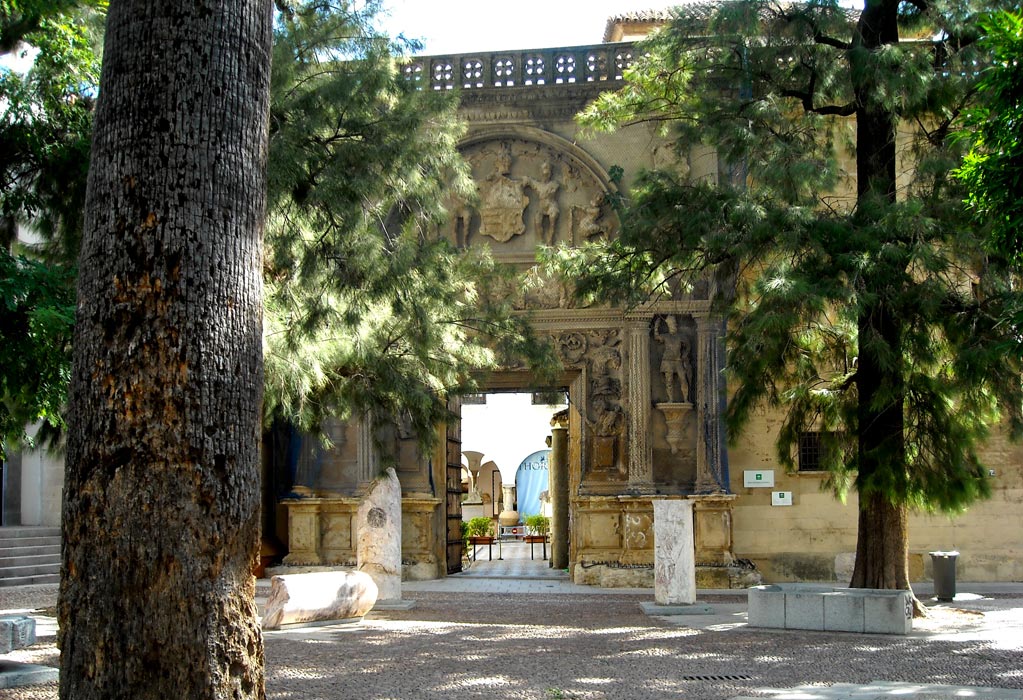In 1999 Oviedo City Council granted the building known as La Casina at number 11 of Fontán street to the Jewish community of Asturias. In addition to a synagogue, a Jewish cultural centre has been set up in this building dedicated to studying, disseminating and promoting the Jewish culture such as the Jewish Book Fair or acts with schoolchildren to remember the holocaust. They also collaborate with the Zibia Lubetkin group to educate about the memory of the Shoah.
Archives: Directory listings
Directory listings
Woody Allen Statue
Following the tracks too of one of the most well-known Jews of our time, in Milicias Nacionales Street, opposite San Francisco park and slightly set back from the traffic on Uría street, stands the statue of the film-maker Woody Allen, a work by Antarúa from 2003, walks absent-minded as if pondering the long history of the Jews of Oviedo in the old district from where its steps appear to come… A final contemporary homage to the memory of a collective which formed part of the history of the city for a large part of the Middle Ages.
Jewish Quarter of Oviedo
After the Ordinances of the Council in 1274, the Jews of Oviedo were required to live in the Socastiello district, alongside the Citadel and the city walls. The Jewish quarter of Oviedo occupied the area from Castillo Gate to the Socastiello New Gate. They could also live outside the walls should they so wish. It should be borne in mind that at that time the houses had already gone beyond the walled area and it is likely that some Jews had settled outside the walls as in the 15th century in the Western area there were still estates with the nickname de los judíos (of the Jews). The Royal Castle and the Citadel in the 13th century occupied more or less the place where today the Telefónica building is located, alongside Porlier square, the Castillo Gate was on the left of the latter and the Nueva gate of Socastiello could have been either near the former San Juan street or the end of Cimadevilla street, as both gates are called Puerta Nueva (New Gate) in documents from the time. The internal limits of the Jewish quarter inside the city are harder to define. No material remains of this Jewish quarter have been conserved. Neither have the same, narrow streets shared by Christians and Jews in the old Oviedo for centuries and the historic documentation which enables us to reconstruct and imagine the inhabitants of said Jewish community: Bartolomé Guion, notary; Beneito, moneychanger; Adan Giraldiz, Pedro Giraldiz, moneychangers; Petro Giraldiz, weaver; Petro Michaeliz, furrier; Aben Arsar, Asur Falconis, Bartolomé Alfageme, Don Symon, Annaias Tanoz and many more.
Convent and University of Saint Dominic
In the Alemanys Garden, very near Gironella Tower, there is an access to the wall-walks with magnificent views over Girona and its barri vell (old district). From here you can gain an idea of the proportions of the old Sant Domènec convent, today the Faculty of Arts of Girona University. The square flanking it was the site in 1409 of a mass anti-Jewish sermon by St. Vincent Ferrer which the Jews were obliged to listen to behind wooden fences. Back in the gardens, and through them, a small clearing leads to the gate of San Cristobel where the route continues outside the wall through a spectacular Archaeological Promenade. Julia tower and Gironella tower define the profile of the large wall alongside which the cathedral is located on a path descending amongst flowers, vines and cypresses.
El Call – Jewish Quarter of Girona
The Jewish quareter of Girona, known as El Call, is one of the most intrieging and symbolic area in the city of Girona. In present times, the Jewish Call is renowned as being one the best preserved in Europe, representing the history and architecture. This area becoming a main tourist attraction as well as the home of Kabbalah, Jewish mysticism. El Call was colonized by the Jewish community until 1492, when the Jews were expelled from the country. The main street in the Jewish Quarter is called Calle de la Forca and during Roman times it was the center of trade in Girona.
The Souk
As in the other Moslem cities, Córdoba constituted a large marketplace. Traders and craftsmen opened their shops on the street in a narrow, busy corridor which spread throughput almost the whole city, offering its customers products they made themselves or brought from all around the world. In ancient times the souk contained wool, perfumeries, shops etc. It suffered several fires along its history, until the 10th century, when the alcaicería was created. The alcaicería is a royal market overseen by the Caliph guard where the lavishest, imported products were sold like silks, perfumes, spices etc. This building served simultaneously as a warehouse and as a guest house for travellers. The current municipal souk, a two-storey Mudejar style building with a large courtyard where the Cordoban craftsmen reveal their know-how with leather work, silverware or ceramics, as well as being a space where travelers can rest and enjoy the beauty of Cordoba.
Arab Baths of Santa María
The Arab Baths of St. Mary´s, often visited by Cordoban Jews, were very popular and abounded in the Córdoba of the Caliph and even preserved after the Christian conquest. They were built during the time of the Caliph and reconstructed in the 14th century by Mudejar master builders. The baths are located between Velázquez Bosco street (the former Comedias street) and Céspedes street (which was Baño Bajo street). The monument includes a rainwater tank and three vaulted rooms corresponding to the frigidarium (cold baths), the tepidarium(warm baths) and the caldarium (hot baths). The first room contains the cold baths, covered by a half-barrel vault and compartmentalised into several rooms, has remained integrated in the current house at number 10 Velázquez Bosco Street, which is open to visitors. Today, the tepidarium room is a square courtyard which is 7.5 metres long each side with galleries whose weight is borne by eight columns which support horseshoe arches and semi-circular domes perforated by truncated pyramid-shaped chandeliers. Finally, the caldarium, a rectangular room, which measures 10.3 by 3.1 metres with brick and stone ashlar walls covered by a stone barrel vault and three series of skylights which are currently covered. On the western side of the room, two horseshoe arches open out which originally were the setting for several swimming pools, and between both, a narrow vaulted gallery providing a connection with the rainwater tank.
Old Citadel (Alcázar Viejo)
The Old Citadel district was where the Jews settled after the Christian conquest of the city in 1236. Then, in 1478, the Jews were moved to the Old Citadel district by the Chief Magistrate Francisco Valdés. However, the Jewish community complained to the Catholic King, allowing them to return to their former site within a year.
Tiberiades Square
The private Tiberiades square opens at the end of the jewish Street, where the bronze sculpture of Maimonides is situated. The work of Amadeo Ruiz Olmos, is a small square for a great man, the greatest of those coming out of the Cordoban aljama, so much so that amongst the Jews the expression arose De Moisés a Moisés no hubo otro como Moisés (Moses come and go but there was none like Moses), alluding to the first name of Moses ben Maimón, better known as Maimonides, or also by his Hebrew initials which formed the name Rambam. The sculpture was inaugurated in 1985 to commemorate the 850th anniversary of the birth of the Sephardi scholar and the square received the name of Tiberiades. The Palestinian settlement in Galilee where the cenotaph is situated pays universal tribute to Maimonides. Dressed in Arabian style, sitting in melancholy fashion with a book between his hands, the universal master seems to be recalling, right in the heart of the Jewish quarter which he saw come to light, a life packed with deeds and visions.
Archaeological Museum of Cordoba
The Archaeological Museum of Cordoba is one of the most complete archaeological museums in Spain. It is located at Jerónimo Páez Square right in the heart of the city’s old town, near the Mosque-Cathedral. It occupies a palace from the Renaissance which belonged to the Páez de Castillejo family. Despite the fact that the building conserves some structures from the Late Middle Ages as it was a Mudejar house, it was remodelled in the 16th century. It was bought in 1496 by the Páez de Castillejo and it is the latter who undertook the Renaissance remodelling, highlighting the main stairs and the doorway. Subsequently, between 1944 and 1959, after being used for various purposes, the palace was adapted by Félix Hernández to accommodate the Archaeological Museum which was set up therein in 1960. The museum was extended in 2011 with a new building housing offices, laboratories and a permanent exhibition.
